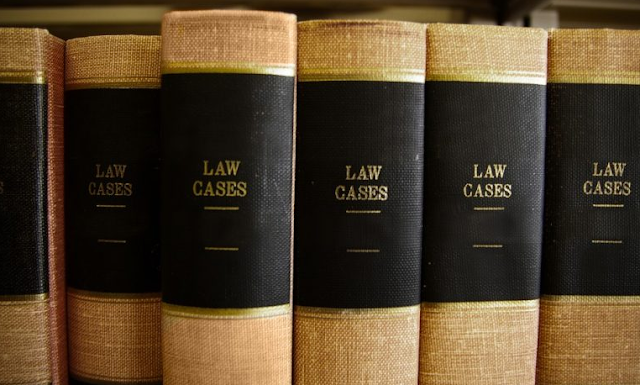Breaking up is hard to do.
Sheinker v Quick, 2020 NY Slip Op 20049, Decided on February 6, 2020, Appellate Term, Second Department:
"In this action, plaintiff seeks to recover the principal sum of $15,000, based on causes of action for breach of contract and fraudulent concealment or fraudulent inducement. In the complaint, plaintiff asserted that she had resided in New York with her two children and with defendant, in a domestic relationship, for several years when, in April 2015, defendant had received an offer of employment in Florida. Plaintiff alleged that, since defendant lacked the financial means to relocate to Florida, the parties had made an oral contract (the Agreement), pursuant to which plaintiff had agreed to pay defendant's expenses to relocate from New York to Florida and the majority of his living expenses for a year, in consideration of defendant's payment to plaintiff of 80% of his net earnings for the same period. Pursuant to the Agreement, plaintiff paid defendant's moving expenses, which she estimated at approximately $15,000, rented and furnished an apartment in Florida, and obtained utility contracts and renter's insurance for the Florida apartment in her name, among other expenses. Plaintiff and her children continued to reside in New York. Defendant went to work in Florida, following which plaintiff began receiving payments in furtherance of the Agreement, initially, by ATM withdrawals that she made from defendant's bank account, and, after several weeks, by wire transfers that defendant made into plaintiff's bank account.
Plaintiff stated that, on June 27, 2015, she became aware that defendant had breached the Agreement by concealing a portion of his earnings from her and paying her less than the amount [*2]to which she was entitled. Subsequently, she learned that defendant had also concealed from her his romantic involvement with a woman in Florida, to whom he had become engaged before he had entered into the Agreement, as well as a prior criminal conviction and a civil judgment that had been rendered against defendant based on fraud. Plaintiff indicated that, had she been aware of defendant's romantic involvement with another woman or his prior financial malfeasance, she would not have entered into the Agreement with defendant.
Defendant denied liability, and, following discovery, moved for summary judgment dismissing the complaint, asserting, first, that since plaintiff admitted to having received payments from defendant that exceeded the $15,000 she seeks to recover in this action, she had no viable claim for relief, and second, that plaintiff's cause of action for fraudulent inducement was barred because it was essentially duplicative of her cause of action for breach of contract.
In opposition, plaintiff stated that, although she had only demanded $15,000, because it is the jurisdictional limit for actions brought in the District Court, defendant's payments to her had not covered the full amount due, and his outstanding contractual debt to her exceeded that sum. With respect to her cause of action for fraudulent inducement, plaintiff indicated that she had entered into the Agreement based on the parties' history of living together in a familial relationship, and with the understanding that if defendant's job worked out in Florida, she and her children would join defendant and make Florida their primary residence. She stated that she had relied on the parties' confidential relationship when she had entered into the Agreement, and that, if defendant had not concealed his relationship with and engagement to the woman in Florida as well as his past record of financial malfeasance, she would not have entered into the Agreement. By order dated August 2, 2018, the District Court granted defendant's motion and dismissed the action, upon a sua sponte finding that plaintiff was, in effect, seeking "palimony," which is not recognized in New York.
While New York will not imply a contract pertaining to earnings and assets from the relationship of an unmarried couple living together, sometimes denominated "palimony," the express contract of such a couple is enforceable (see Morone v Morone, 50 NY2d 481, 484 [1980]; see also Dee v Rakower, 112 AD3d 204, 210-211 [2013]). Here, plaintiff pleaded the elements of a cause of action for breach of contract, including its existence, her performance under the contract, defendant's breach of his contractual obligations, and plaintiff's resulting damages (see 143 Bergen St., LLC v Ruderman, 144 AD3d 1002, 1003 [2016]). Consequently, the District Court erred in, sua sponte, dismissing the action on the ground that it constituted an unenforceable action for "palimony."
A plaintiff may, if she so chooses, seek a recovery in a court with a lower jurisdictional limit than the amount of her damages, provided that the plaintiff confines her demand to the court's jurisdictional limit (see Wallach v Flood, 54 Misc 3d 127[A], 2016 NY Slip Op 51789[U] [App Term, 2d Dept, 9th & 10th Jud Dists 2016]). Here, plaintiff alleged contract damages substantially in excess of the sum which defendant had paid her. The fact that she had confined her demand to the jurisdictional limit of the District Court did not provide a valid basis for the dismissal of the action.
By alleging in the complaint that the parties were in a confidential relationship at the time they entered into the Agreement (see Sharp v Kosmalski, 40 NY2d 119, 121 [1976]; Mei Yun Chen v Mei Wan Kao, 97 AD3d 730 [2012]), from which it could be inferred that defendant had [*3]a duty to disclose any material information (cf. Sanford/Kissena Owners Corp. v Daral Props., LLC, 84 AD3d 1210, 1211 [2011]; Manti's Transp., Inc. v C.T. Lines, Inc., 68 AD3d 937, 940 [2009]), and that defendant had concealed facts from her—to wit, his engagement to another woman and his prior history of financial fraud—which were collateral to the Agreement but the concealment of which served as an inducement for plaintiff to enter into the Agreement, plaintiff pleaded a cause of action for fraudulent inducement which was not duplicative of her cause of action for breach of contract (see Greenberg v Meyreles, 155 AD3d 1001, 1003 [2017]). Since, in his motion, defendant failed to provide evidentiary materials to eliminate any material issues of fact from the case (see Winegrad v New York Univ. Med. Ctr., 64 NY2d 851, 853 [1985]) or otherwise to establish his entitlement to judgment as a matter of law, his motion should have been denied."













